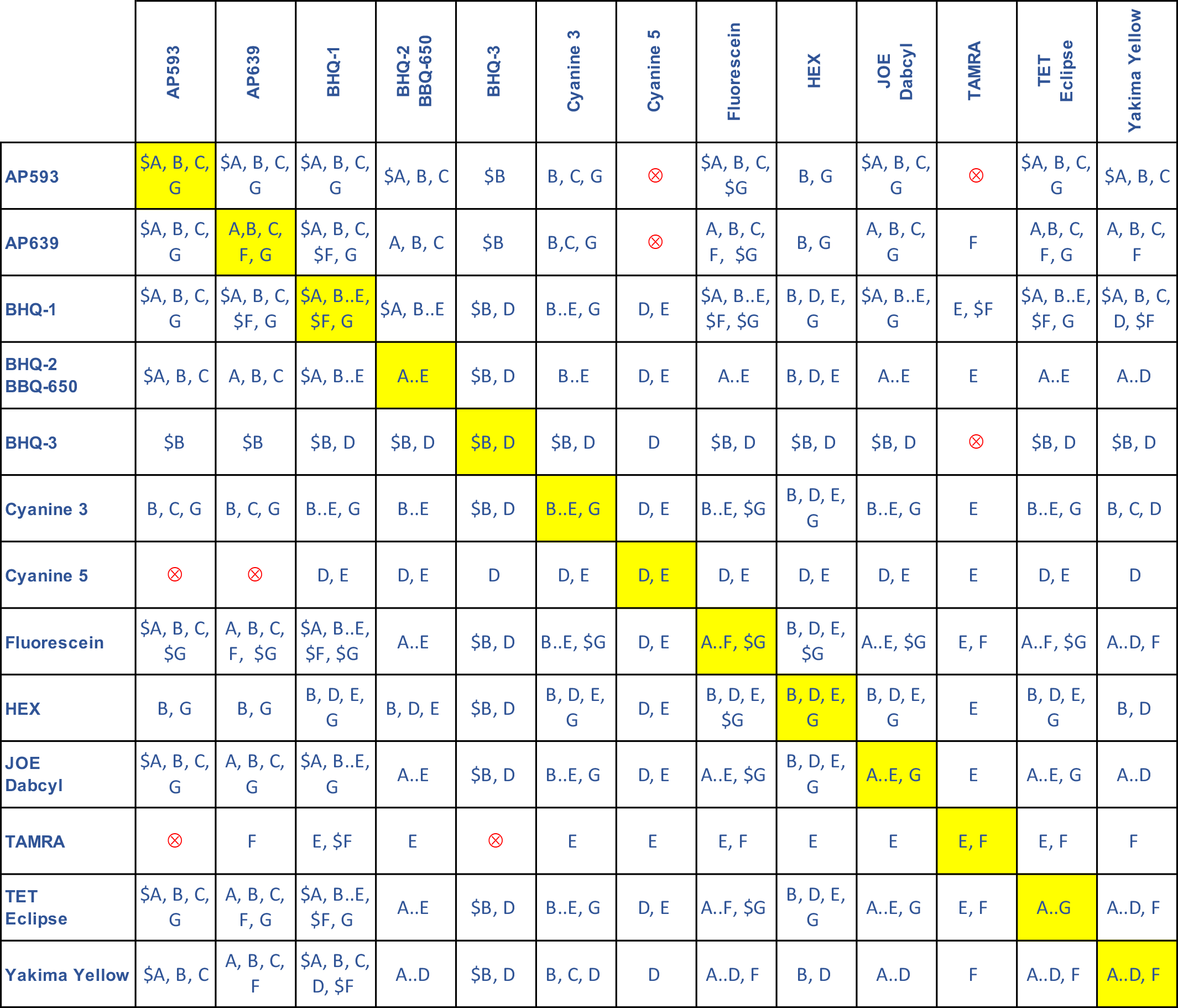Glen Report 34-21: Deprotection — Volume 3 — Dye-Containing Oligonucleotides, an Update
While following our principle of "Deprotection to Completion", one should always adhere to our mandate of “Do No Harm”. This is especially true when dealing with expensive dyes since these modifications are often sensitive to basic deprotection conditions. Our dye deprotection table, first published in 20091 and subsequently updated in 20132, provides guidelines and recommendations for deprotection conditions of oligonucleotides containing a combination of dyes and/or quenchers. Over the years, this table has been a popular reference tool for our customers.
Since our last update, we have added a couple of rhodamine dyes to our catalog, AquaPhluor® 593 (AP593) and AquaPhluor® 639 (AP639). Both these dyes are part of the ELITechGroup AquaPhluor® family of fluorescent dyes. AP593 is a good substitute for Texas Red®3 while AP639 is an alternative to Cyanine 5.4 We have added these products to the deprotection table.
Identifying the optimum deprotection conditions requires connecting columns and rows of the interested dyes in the table. Referencing the table, the preferred deprotection methods for an oligonucleotide containing both Fluorescein and TAMRA are “E” and “F”. The choice of the “E” and “F” deprotection conditions, in this case, is mainly dictated by the TAMRA, which is more sensitive to basic deprotection conditions, relative to the Fluorescein. It is worth noting that the deprotection conditions apply to all product versions (5’-phosphoramidites, internal modifications such as dT-dye, and the supports).
As before, the methods for oligonucleotide deprotection (A-G) are as follows:
- 30% NH4OH 17 hours at 55 °C; sufficient to deprotect all standard bases, A/C/G/T.
- 30% NH4OH 17 hours at room temperature; sufficient to deprotect A, C, and dmf-dG.
- 30% NH4OH 2 hours at 65 °C; sufficient to deprotect A, C, and dmf-dG.
- 30% NH4OH 2 hours at room temperature; sufficient to deprotect only UltraMild monomers, Pac-dA, Ac-dC, iPr-Pac-dG when UltraMild Cap A is used.
- 50 mM Potassium Carbonate in Methanol for 4 hours at room temperature; sufficient to deprotect only UltraMild monomers, Pac-dA, Ac-dC, iPr-Pac-dG when UltraMild Cap A is used.
- Tert-Butylamine/water 1:3 (v/v) 6 hours at 60 °C; sufficient to deprotect A, C, and dmf-dG.
- 30% Ammonium Hydroxide/40% Methylamine 1:1 (v/v) 10 minutes at 65 °C; sufficient to deprotect all standard bases, however, Ac-dC must be used.
Table 1: Deprotection Conditions Suitable for Popular Dyes and Quenchers

 = Incompatible $ = Denotes an acceptable, but not preferred method.
= Incompatible $ = Denotes an acceptable, but not preferred method.
Notes:
1. JOE (5’-Dichloro-dimethoxy-Fluorescein Phosphoramidite) has not been tested with Condition F.
2. Fluorescein is compatible with deprotection in AMA without any degradation if the oligo is first treated with 30% NH4OH to remove the pivaloyl protecting groups from the Fluorescein and then the 40% Methylamine is added to complete the deprotection of the bases.
References
- The Glen Report, 2009, 21.2, 11.
- The Glen Report, 2013, 25.S, 4.
- The Glen Report, 2016, 28.2, 8.
- The Glen Report, 2020, 32.2, 1-3.

